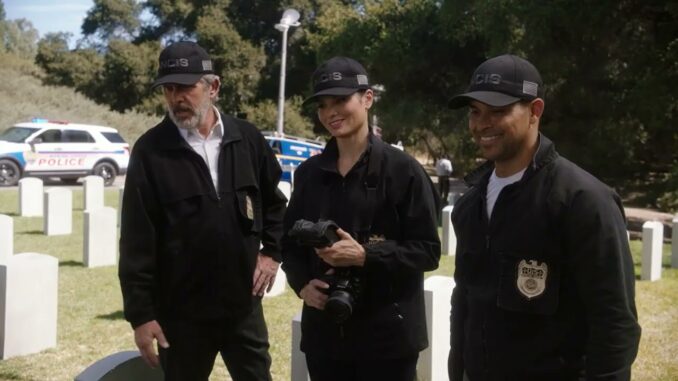
When Logic Stumbles: NCIS and the Unexplained Death
The harsh fluorescent lights of the NCIS autopsy room hummed, a sterile counterpoint to the chilling mystery that lay on the stainless steel table. Ducky Mallard, his face etched with a concern that transcended his usual jovial demeanor, ran a gloved hand along the victim's chest. Special Agent Leroy Jethro Gibbs, ever stoic, stood observing, his keen blue eyes missing nothing. This wasn't just another case of foul play; this was a puzzle that defied the very laws of nature, a death that science, in its meticulously documented certainty, simply couldn't explain.
The victim, a renowned astrophysicist named Dr. Aris Thorne, had been found in his locked office at the Naval Research Laboratory, slumped over his computer, lifeless. There were no signs of forced entry, no indication of a struggle, and no detectable poison or weapon. An initial examination revealed a completely healthy man, no pre-existing conditions, no signs of a heart attack or stroke. He was, quite simply, dead, and the how remained an impenetrable enigma.
This wasn't the kind of case NCIS typically handled. Gibbs, usually dealing with straightforward murders and espionage, felt a prickle of unease. He was a man of action, of gut feeling and practical deduction. But gut feeling could only get you so far when faced with a scientific anomaly. He glanced at Abby Sciuto, her Goth aesthetic a stark contrast to the clinical setting, her enthusiasm nevertheless infectious. "Abby," he rumbled, "tear down that lab. Find me something, anything, that doesn't make sense."
Abby, invigorated by the challenge, threw herself into the investigation. Her lab became a symphony of whirring centrifuges, flashing screens, and the rhythmic clink of test tubes. She analyzed the air quality, the electromagnetic fields, even the dust particles in Thorne's office, meticulously documenting every anomaly. But the results were sterile, frustratingly normal. The only irregularity was a faint trace of an unidentified energy signature emanating from the computer, a signature so fleeting and indistinct that it was almost dismissed as background radiation.
Meanwhile, Tony DiNozzo, ever the movie buff, was spinning theories worthy of a sci-fi blockbuster. "Maybe it's aliens, Gibbs! He stumbled upon some intergalactic secret and they silenced him!" Gibbs, of course, dismissed Tony's fantastical musings with a characteristic head slap, but even he couldn't deny the unsettling feeling that they were dealing with something beyond the realm of conventional understanding.
Ducky, in his inimitable way, approached the case with a mix of scientific rigor and philosophical pondering. He delved into Thorne's research, a complex tapestry of theoretical physics and quantum mechanics. Thorne was obsessed with the concept of parallel universes, of dimensions beyond our perception. Was it possible, Ducky wondered, that Thorne had inadvertently opened a door to one of these realities, a door that had led to his untimely demise?
As the investigation progressed, a picture of Dr. Thorne began to emerge: a brilliant but eccentric man, consumed by his work, driven by an insatiable curiosity that bordered on recklessness. He was known to conduct unauthorized experiments, pushing the boundaries of scientific possibility in his relentless pursuit of understanding the universe's secrets.
The breakthrough came unexpectedly from McGee, the resident tech wizard. He managed to recover a corrupted file from Thorne's computer, a simulation of a complex quantum experiment designed to manipulate space-time. The simulation showed a brief, but intense, energy surge, followed by a complete system failure. The energy signature matched the faint trace Abby had detected in the office.
The pieces of the puzzle, though still fragmented and shrouded in uncertainty, began to coalesce. Thorne, in his quest to unravel the mysteries of the universe, had inadvertently created a localized energy fluctuation that had somehow, inexplicably, disrupted his own life force. It was a theory that skirted the edge of plausibility, but it was the only explanation that fit the available evidence.
Gibbs, never one to embrace the supernatural, found himself grappling with the unsettling reality that science couldn't always provide definitive answers. He looked at the sterile autopsy table, at the lifeless body of Dr. Thorne, and a sense of profound unease settled over him. This wasn't just a case of murder; it was a cautionary tale about the hubris of man, about the dangers of tampering with forces beyond our comprehension.
In the end, the official cause of death remained "undetermined," a tacit acknowledgment that the truth lay beyond the grasp of scientific explanation. NCIS had closed the case, but the mystery of Dr. Thorne's death lingered, a haunting reminder that there are some doors best left unopened, some secrets best left buried, and some deaths that science, for all its brilliance, can never truly explain. The case became a chilling testament to the vastness of the unknown, a reminder that even in the most rational of worlds, the inexplicable can, and sometimes does, occur, leaving behind a lingering sense of mystery and a profound respect for the limits of human understanding.
